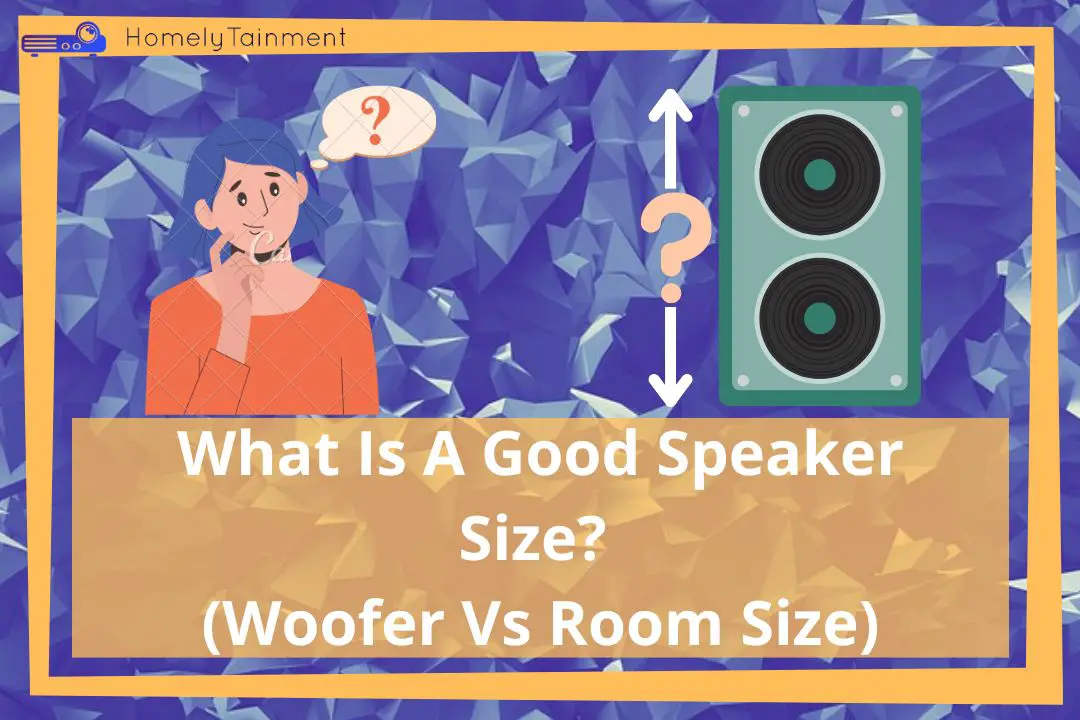
Homelytainment earn commissions (at no additional cost to you) if you purchase products from retailers after clicking on a link from our site.
The requirement list for the in-ceiling speaker must be categorized into two categories according to me. Because before installing them, you need know-how about it too. That’s why I have categorized this step-by-step guide into two sections; Know-How and Technical section.
The steps Are Mentioned Here. At A Glance:
- Decide what you need it
- Know about the sound dispersion
- Consider the environment of the installation area
- Decide which type you need
- Decide The Size Of the Speaker And Installation Area Capacity
- You, Will, Need All The Necessary Tools
- You Must Know The Installation Process Or Hire Someone
- You will need to Soundproof It
- You Will Need Wires For Connectivity
- You Will Need To Test Them & Adjust The dB
Keep reading to know each section in detail.
Know-How Section (Also A Buying Guide)
Decide what you need it
Before acquiring the ceiling speakers, you must first decide for which purpose you require them. The needs are if you need them for movies or music throughout the house.
Read each purpose to know what type of speaker you require for it.
For home theater purposes
For home theater, you require mono stereo ceiling speakers. In these types of speakers. You get a pair of speakers. One speaker for one channel. You need to satisfy two channels with this one pair.
Here for movies, the stereo effects separation is very important. You should clearly feel the helicopter flying from left to right.
That’s why you require mono stereo speakers for this purpose. To know how far apart each one should I place? Read my article to know how to make in-ceiling speakers sound good?
For Music Purpose
For music, we install speakers separately in the kitchen, above the dining table, or in the bathroom. Here you can’t install one mono speaker in the bathroom and one in the kitchen because the stereo channels will split here and the experience of music will be ruined.
That’s why here we require a single stereo speaker. In this type of speaker, you get two channels in one speaker.
You can install one single stereo speaker anywhere in the house for second-zone audio or music purposes.
Know about the sound dispersion
Each type of speaker has its sound dispersion. You should know how its dispersion works to make the sound quality better.
Single stereo speaker
The single stereo speaker typically has dual tweeters. This type of speaker is used for music. That’s why to have the best music experience, you require a speaker that allows you to tweak its tweeter.
Adjust the tweeter to point them at opposite sides of each other. They will be able to cover the area more accurately.
Mono Stereo Speaker
This type of speaker is better suited for home theater, and they have one tweeter. Point the tweeter at you to better understand the dialogues of the movies.
Consider the environment of the installation area
The ceiling speakers are made for each type of environment. They are rated in IP ratings. If you want to install it in a humid area like a sauna then you will need IP 44 rating speakers, but if you want it for outdoors or in the bathroom then you should consider an IP 65 rating. IP 65 rating speakers are moisture and dustproof.
Read my this guide about the best home theater, in-ceiling speakers. This is a review and a few speakers are water and dustproof.
Decide which type you need
There are two types of ceiling speakers. One is passive, and the other is active. For the passive, you will need an extra amplifier to power them and in the active the amplifier is built-in.
I prefer an active ceiling speaker because the manufacturers know which type of amplifier they should equip them with. They know their product better.
But the passive is good too because there are a plethora of good amplifiers available in the market.
Decide The Size Of the Speaker And Installation Area Capacity
Decide which driver-size speaker you require for your purpose. The driver from 3-4 inches is better.
Also, see what is the capacity of the installation area. Till how much depth it can accommodate the speaker. Typically, the 100 mm mounting depth from the surface speaker is better, but you should inspect, first, which depth of speaker your installation area can accommodate.
Know how to optimize the sound of home theater. Get my favorite 5 steps in it.
DIY Technical Section
You, Will, Need To Arrange All The Necessary Tools
These are the tools you will need if you are going to DIY it.
- Cutout template – provided within the speaker box. Almost with every speaker
- Pencil – To mark the circle where you will cut the ceiling
- Jigsaw – To cut the ceiling in a circle following the cutout template
- Mounting frame – it is needed for a few speakers and not for other
- Patience – because fitting a speaker in the ceiling is a work of patience
Know these tools and the DIY process from this video
You Must Know The Installation Process Or Hire Someone
There are two ways to install the in-ceiling speakers. DIYing it or hiring someone professional for it.
Do It Yourself
Repeating the same process here will be a redundant thing. Watch the above video for that.
Hire Someone For This Job
If this process is looking difficult for you or you are not comfortable with it, then you can find someone locally or on Craigslist to do it for you.
Hiring someone professional will be a nice step to take because it will ensure the best possible installation.
You will need to Soundproof It
The sound can easily leak upstairs. The people upstairs will be upset with the sound of it.
That’s why you must install a back box at the back of it. You can order a ready-made one from Amazon, or you can create it DIY. You can order this Amazon choice speaker enclosure that can improve sound quality and can also soundproof the speaker. Or follow this below video for DIY speaker back box making.
Read my this guide to soundproof the entire home theater. You will have superb sound quality.
You Will Need Wires For Connectivity
If you think that you need wires longer than 35 meters then you should use 14 gauge wire, otherwise use 16 gauge if you need shorter than 35 meters. Know more tips like these and also know why 14 gauge by reading my article.
Connect all the speakers to the receiver or amplifier with these speakers and now is the time to test them.
You Will Need To Test Them
You need to have each speaker level 75dB in your seating area. Now play some test notes on the speakers and hold the SPL meter in your seating area. Adjust each speaker to 75dB and test it with movies and music. Read my this guide about the best home theater SPL meter.
If you are satisfied with the sound quality, then you are good to go with it.
Did you get something out of this in-ceiling speaker guide? Hold On We Have Something Exciting To Share.
[the_ad id=”4771″]FAQs
How are ceiling speakers wired?
If your home theater is pre-wired for ceiling speakers. Then simply find the wires in the ceiling after cutting the area for it. Connect the wires to the speaker’s binding posts at the back. Connect the red wire to the red binding post and black to black.
But if your home is not pre-wired for ceiling speakers, then hire a professional because you must keep yourself from future hazards occurring.
The professional will do it in a way that will prevent future power failure or fire risks.
How do ceiling speakers connect to an amp?
Each amp has jacks for the speakers. Connect the black-colored jack through a wire to the black binding post of the speaker and the red to the red.
It is simple as long as the amp has a simple layout. Otherwise, follow the user manual of the amp. This manual will be provided with the speaker, or you can find it online on the manufacturer’s site.
Are In-Ceiling speakers worth it?
They are absolutely worth it to shower the Dolby Atmos sound effect from above. They give a perfect helping hand to Dolby Atmos audio. It is the best and 99% right type of speaker when choosing speakers for Dolby Atmos.
Helpful Resources For The FAQs To Read More
- This was my opinion, read more on how to install ceiling speakers from ElectronicHous Blog. (Resource for the first answer)




